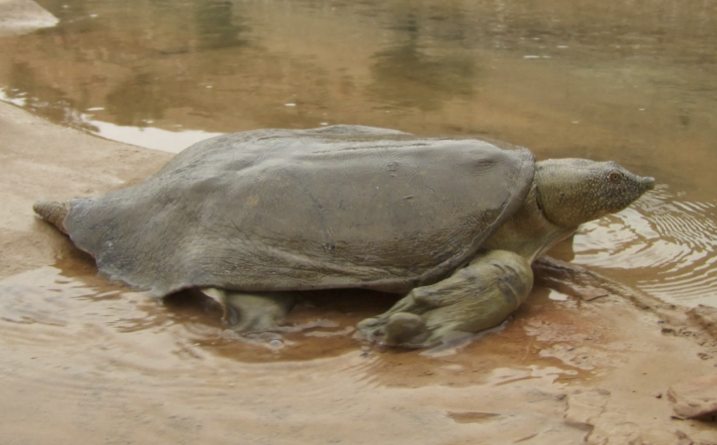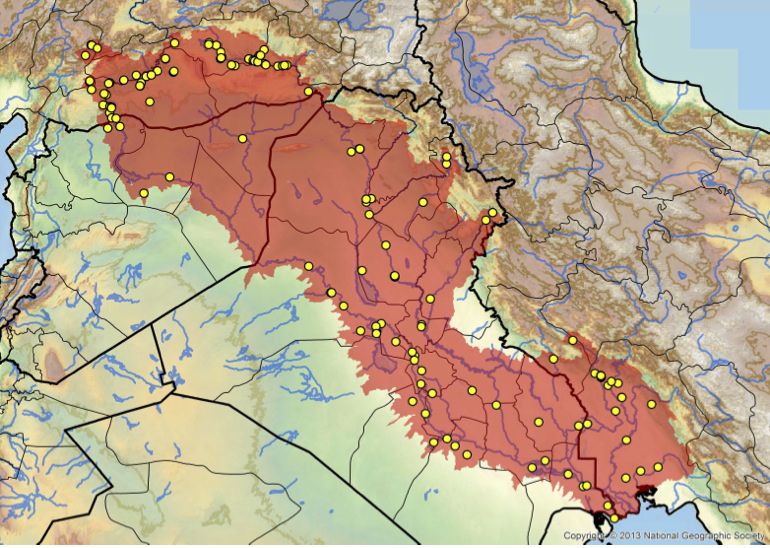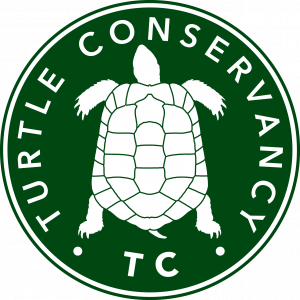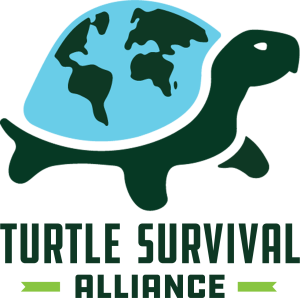Rafetus euphraticus, 098
Rafetus euphraticus (Daudin 1801) –
Euphrates Softshell Turtle
Ertan Taskavak1, Mehmet K. Atatür2, Hanyeh Ghaffari3, and Peter A. Meylan4
1Faculty of Fisheries, Ege University, Izmir, Turkey [[email protected]];
2Biology Department, Faculty of Science, Ege University, Izmir, Turkey [[email protected]];
3Department of Environmental Sciences, Faculty of Natural Resources,
University of Kurdistan, Sanandaj, Iran [[email protected]];
4Natural Sciences Collegium, Eckerd College, 4200 54th Avenue S., St. Petersburg, Florida 33711 USA [[email protected]]
Summary. – The Euphrates Softshell Turtle, Rafetus euphraticus (Family Trionychidae), is a medium-sized (maximum recorded carapace length 680 mm), freshwater turtle thought to be most closely related to the eastern Asian species Rafetus swinhoei. The species inhabits diverse habitats, including rivers, streams, ponds, lakes, reservoirs, marshlands, and artificial canals. It is found only in the Euphrates and Tigris rivers and their tributaries in Turkey, Syria, Iraq, and southwestern Iran. It occurs in relatively shallow, calm waters, typically adjacent to deeper, fast-flowing water. The home range size averages 47.5 ha (minimum convex polygon) with a mean 95% kernel density of 21.8 ha. Knowledge of the species’ distribution in the Tigris system lacks detail, due in part to political disturbance. Populations of the species are threatened by ongoing habitat fragmentation, alteration, and destruction throughout its range. Construction of several large dams has drastically changed the habitat of this turtle, especially in the Turkish part of the Euphrates watershed. This serious threat endangers the future of this species. No conservation measures are being taken in southeastern Anatolia (Turkey), Syria or Iraq. A participatory conservation project is underway in Khuzestan Province, Iran. Population studies, strengthened national and international protection, and regional cooperation will be required for the long-term survival of Rafetus euphraticus.
Distribution. – Iran, Iraq, Syria, Turkey. Restricted to the Euphrates and Tigris River basins.
Synonymy. – Testudo euphratica Daudin 1801, Trionyx euphraticus, Gymnopus euphraticus, Rafetus euphraticus, Pelodiscus euphraticus, Amyda euphratica, Tyrse euphratica, Testudo rafcht Olivier 1807, Testudo rascht Gray 1830 (nomen novum), Tyrse rafeht Gray 1844 (nomen novum), Trionyx rafeht.
Subspecies. – None recognized.
Status. – IUCN 2015 Red List: Endangered (EN A1ac+2c; assessed 1996); TFTSG Draft Red List: Endangered (EN, assessed 2011); CITES: Appendix II, as Rafetus spp.
Citation:
Taskavak, E., Atatür, M.K., Ghaffari, H., and Meylan, P.A. 2016. Rafetus euphraticus (Daudin 1801) – Euphrates Softshell Turtle. In: Rhodin, A.G.J., Iverson, J.B., van Dijk, P.P., Saumure, R.A., Buhlmann, K.A., Pritchard, P.C.H., and Mittermeier, R.A. (Eds.). Conservation Biology of Freshwater Turtles and Tortoises: A Compilation Project of the IUCN/SSC Tortoise and Freshwater Turtle Specialist Group. Chelonian Research Monographs 5(9):098.1–11. [doi:10.3854/crm.5.098.euphraticus.v1.2016; //iucn-tftsg.org/cbftt/]
(Adobe Acrobat 6.0 or later required)

Rafetus euphraticus in Balarood River, Khuzestan Province, Iran.
Photo by Hanyeh Ghaffari.
Distribution:

Distribution of Rafetus euphraticus in the Middle East. Yellow dots = museum and literature occurrence records of native populations based on Iverson (1992), plus more recent and authors’ data. Red shading = projected historic distribution of R. euphraticus. Distribution based on GIS-defined level 10 HUCs (hydrologic unit compartments) constructed around verified localities and then adding HUCs that connect known point localities in the same watershed or physiographic region, and similar habitats and elevations as verified HUCs (Buhlmann et al. 2009; TTWG 2014), and adjusted based on authors’ subsequent data.








